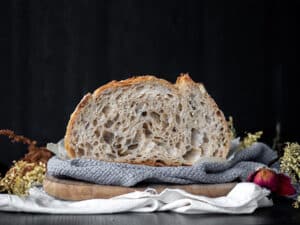The results of all these studies now provide us with the basic techniques and essential foundations of “frozen dough products”. Lesaffre, however, continues to invest in the search for high-powered solutions for deep-freezing, with its focus at present on consumer health. The consistent results typifying the finished product also forms part of these quality criteria.
Deep-freezing creates excellent dough volume
A whole host of good practices are essential: more flexibility to ensure non-stop product availability, facilitating transport, optimising the time element, etc …
Developments in the associated technologies and facilities have led to better control over the deep-freezing process: air speeds and temperatures are now less aggressive. The length of production lines and freezer dimensions have also been optimised. Flour quality has undergone significant improvements: dough, which is porous during deep-freezing, at one time had too low a gas retention capacity.
We should also note that increasing the protein content in flour led to strengthening the dough’s gluten chains, thus improving its consistency and volume. Likewise, progress has also been made in controlling enzyme activity in (hypodiastatic) flour. Major developments, in which Lesaffre has played a large part, have also led to remarkably well adapted dough for deep-freezing situations, thus placing French yeast in the top 3!
The final dough temperature should be as low as possible
In order to optimise the dough’s ability to rise after freezing, the baker must pay attention to various parameters in his process. But he must, first and foremost, ensure the correct composition of the dough, mainly as regards the quality and dosage of the ingredients. The protein content in flour, which is on average 11 – 12 % / dry matter, should reach 13 % in frozen dough to ensure a faster dough rise. The baker can use strong flour and add deactivated yeast to obtain a supple, extensible dough, thereby compensating for the lower viscoelastic properties of the gluten.
It is not recommended to go any lower than – 15°C core temperature for a deep-frozen non-fermented product on removal from the freezer. This is to better safeguard cell vitality and avoid a visible freeze-drying halo around the product.
The whole point of the deep-freezing process is to ensure the dough is as stable as possible in terms of gas retention capacity, and wherever possible to minimise the start-up of fermentation in order to preserve cell viability. The final dough temperature should be as low as possible, which therefore dictates the use of the spiral paddle to minimise a temperature increase. Finally, due to the very low thermal conductivity of dough, only small dough pieces with a reduced profile are suitable for deep-freezing.




